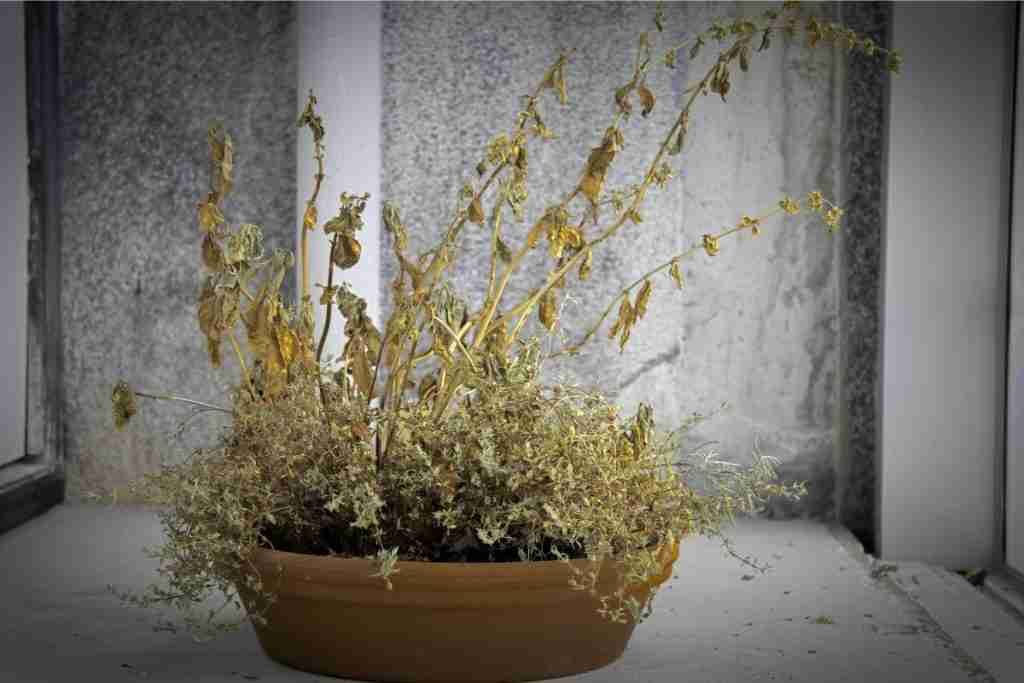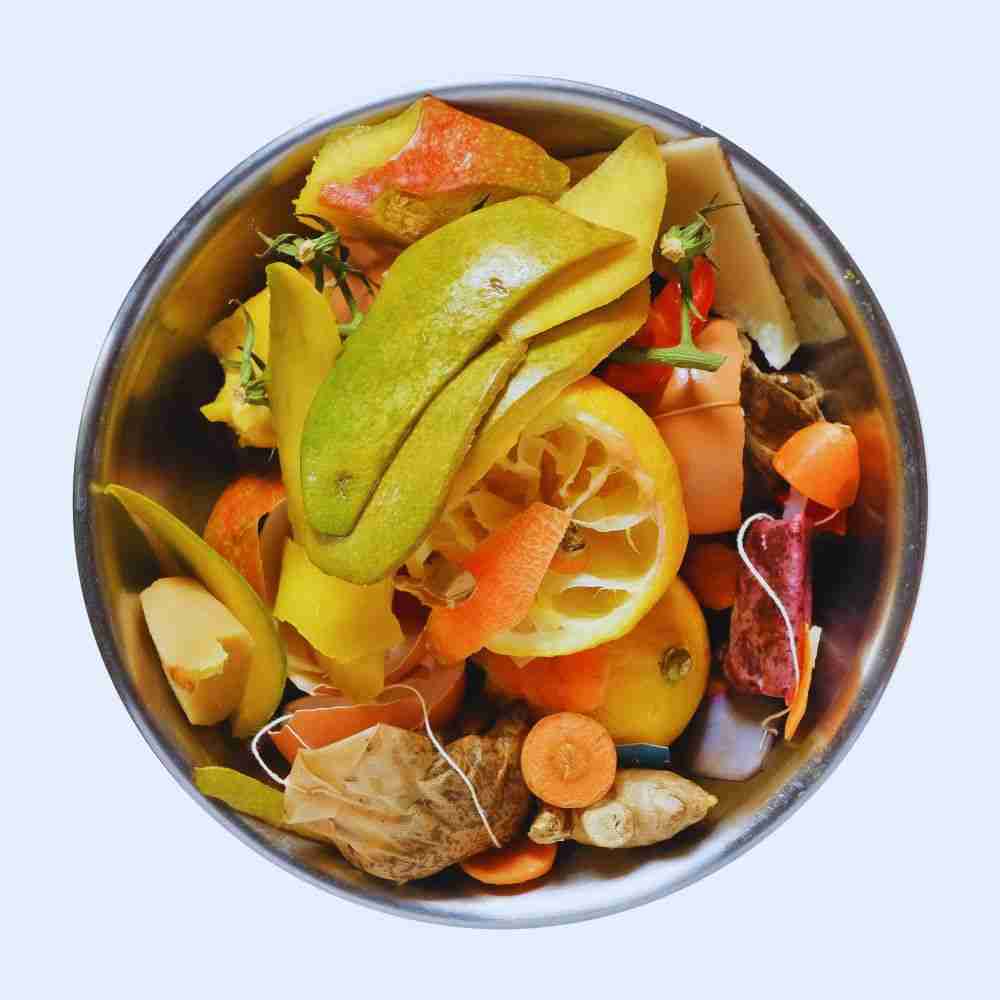
Plants, like people, require a significant amount of water and nutrients to survive. Plants kept indoors or in pots will need to be fed more often than those outside since they do not have the benefits of the natural foods beneath the soil.
According to most experts, you should fertilize your plants every two weeks, from early spring to mid-fall. This schedule may fluctuate a bit depending on the type of plant and condition but should suffice for most.
What plants are you growing at home? Are they in good shape, or do they need a little pick-me-up? Do you have succulents, herbs, or flowers? These questions can help you determine the best fertilizer schedule for you.
Table of Contents
Why Give Your Plants Nutrients?
In their natural habitat, plants are fed through decaying vegetation, wildlife, insects, and other elements that provide them with everything they need to thrive and grow.
When placed inside a pot, even with the best potting soil, your plants are not getting a continuous flow of these nutrients.
Purchasing a quality fertilizer with the right amount of essential ingredients such as nitrogen, potassium, and phosphorus will ensure your plants have the optimum amount of energy-sustaining food for successful growth.
Feeding Your Indoor Plants
It is ideal to offer your indoor plants fertilizer at least once every two weeks during the spring, summer, and early fall months, then cut back or stop altogether in the winter. However, consider a few things when feeding the plants that might require you to add an extra dose or two.
The Size of Your Plants
Large plants or plants that bear fruits, vegetables, or big flowers require more nutrients for optimal growth and the energy to maintain production.
If you have an array of smaller plants growing inside your home, they won’t require nearly as many resources, requiring smaller doses of fertilization.
The Stage of Growth They Are In
The growth stage your plant is in will play a role in the amount of fertilizer they need.
Ill plants, larger plants, and recently re-potted plants will benefit from an extra dose between their regular schedule. Adding a little more during this time will help the plant grow and recover quickly.
Older plants are also known for absorbing and using nutrients rapidly, which will also require extra feedings.
The Type of Plant You Have
Some plants adjust well to soil that lacks nutrients, making them less reliant on added fertilizers. For example, succulents tend to do very well without any fertilizer at all.
On the other hand, vegetables are heavy feeders and require frequent fertilization while growing inside your home.
The Season
Even indoor plants tend to go dormant during the winter. While in a dormant state, you do not need to provide any extra nutrients to the soil.
In the dormant state, plants store nutrients and water in their roots and will not grow, which means they do not need nutrients to produce energy. At the same time, they cannot absorb any more nutrients even if they are available.
It is also important to note that most plants require some extra food during the hot and humid summer months due to the energy used while surviving the heat. When offering your plants extra fertilizer in the summer, be very careful to avoid fertilizer burn. (We’ll talk more about this later in the post.)
What Type of Fertilizer Should I Use?
The fertilizer you use is an important factor when scheduling your plant’s feeding routine. There are fertilizers on the market specifically made for indoor plants. These products list the instructions on how often to feed each plant and how much.
When using store-bought fertilizer, it is crucial to check the label, ensuring your flowers are receiving the best products out there.
Liquid Fertilizer
If you are providing your plants liquid fertilizer, they need a dose at least every two weeks. This type of nutrient solution is fast-acting and is absorbed quickly into the soil, then the plant roots.
Slow-Release Fertilizer
Slow-release fertilizer can help you space your feedings out a little bit longer than the liquid variety. These are tiny caplets that, as the name states, release nutrients slowly into the soil.
Granular Fertilizer
Granular fertilizer comes in pellets or sticks that you push into the plant’s soil. The mix is released once you add water to the pot. These are also typically added to plants every other week.
| Tip: Liquid fertilizer offers a more accurate dose as granular options don’t provide an exact distribution rate since it is determined by how much water you give the plant for each feeding. |
Signs of Too Much and Too Little Fertilizer
When feeding your plants, ensuring you give just the right amount of fertilizer will be the difference between a healthy, vibrant plant and a weak, sick one.
Most people know that a lack of fertilizer can be bad for your indoor plants. However, many aren’t aware of the dangers of overdoing it.
While most intentions are good, giving your plant a little more fertilizer won’t necessarily speed up growth or make it a little more vibrant. Just a tad too much can burn your plant’s roots and can even end up killing it.
Signs Your Plant Needs More Fertilizer (Nutrient Deficiency)
If your plant is healthy, there is no reason to apply fertilizer to the soil. However, there are some signs and symptoms to watch for that will indicate otherwise.
- Lack of Nitrogen – The plant’s growth will slow down or stop without enough nitrogen. The leaves will be yellow and begin to wilt or droop. Plants that produce fruit will give off smaller-sized fruits.
- Lack of Potassium – Small spots will develop on plant leaves when they don’t have enough potassium. These spots will grow and become large dull patches, and the tips will turn yellow and curl upwards. Roots will slow down growth, and the plant will become stunted.
- Lack of Phosphorus – Without enough phosphorus, plant leaves will turn a dullish green, and the tips will turn brown. The roots will weaken, and the plant will produce small or no flowers.
| Tip: To get an even amount of the three nutrients listed above, consider purchasing an all-purpose fertilizer with a balance 20-20-20 formula. |
Signs You Are Giving Your Plant Too Much Fertilizer (Nutrient Toxicity)

You never want to over-fertilize your plants. That’s why it is so important to read the labels on the fertilizer packages and follow the instructions to a T. Here are some ways you can tell if you are overdoing it when tending to your indoor garden:
- The lower leaves on your plant will start to turn yellow and wilt
- The tips of each leaf will start to turn brown and look dead
- Rotting roots (blackish brown coloring)
- Slow or stunted growth
- Leaves will prematurely start to fall from the plant
- A noticeable crust of dried fertilizer on top of the soil
What Is Fertilizer Burn?
When you think of fertilizer burn, the word burn probably makes you think of scorching or overheating, but that isn’t the case.
Fertilizer burn is when you add too much fertilizer to the soil and it sucks the moisture right out of the plant, causing it to dehydrate and turn brown, making it look like it is burned.
Giving Your Plants Nutrients Naturally
If you aren’t keen on spending money on over-the-counter fertilizers or simply don’t want to use them when there are more natural ways to feed your plants, there are some great items around your kitchen that will do the trick.
- Worm tea
- Banana peels
- Bone meal
- Fish emulsion
- Coffee grounds
- Bat guano (bat poop)
- Liquid kelp
- Compost tea
- Plant extracts
- Animal manure (vegetarian animals only)
- Rock phosphate
- Aquarium water
- Eggshells

You can add any of these items to your plant’s pot (after mixing it up with soil of course), and it will create nutrient-dense compost that will keep your plant happy, healthy, and growing better than ever.
| Tip: Creating a compost pile at home is a great way to recycle food waste and organic material that would otherwise end up in the trash. |
Tips and Tricks When Giving Your Plants Nutrients
While feeding your plants may seem straightforward, you can do many things to ensure the process goes as smoothly as possible and get the most out of your fertilizer.
Here are a few great tips and tricks to keep in mind while plotting out your feeding schedule.
Water Your Plant Before Adding Fertilizer
Watering your plant before adding the fertilizer is something many professional gardeners suggest doing. This will help keep your roots from burning and help them absorb the nutrients quicker and easier.
Test Your Soil
Fertilizer isn’t one-size-fits-all, and some plants will require fertilizer more often than others. The best way to determine how much and how often your plants need a boost of nutrients is by keeping track of how quickly they absorb the food you give them.
Test your soil every week or so with a kit until you can come up with the best schedule for fertilizing each of your plants, then stick to that schedule unless it shows signs that something needs to be changed.
Dilute Your Fertilizer
Read the label on the product you purchased to dilute your fertilizer to the appropriate mixture, then dilute it a little more.
Most gardeners we asked say they get better results when over-diluting their fertilizer just a little bit, especially those who have plants that need to be fertilized often.
Feed According to Growth Rate
Some plants are naturally fast growers and require a lot more fertilizer during the growing months than plants that tend to grow slower.
Some plants that are well-known for their rapid growth rate include:
- Begonias
- Chain of Hearts
- Ficus
- Grape Ivy
- Herbs
- Lipstick Plant
- Money Tree
- Monstera
- Pothos
- Philodendrons
- Syngonium
- Tradescantia
Some plants with a reputation to grow a bit slower include:
- Aglaonema
- Bromeliads
- Cactus
- Cast Iron Plants
- Dragon Tree
- Hoyas
- Jade
- Snake Plants
- Succulent
- ZZ Plants
How Often Should I Give My Seedlings Nutrients?
Seedlings thrive the best with an organic fertilizer containing plenty of phosphorus. Phosphorus is the crucial nutrient that stimulates root growth.
For most seedlings, it is ideal to provide them with a dose of quality fertilizer, diluted at about half the recommended dose (unless otherwise instructed on the package for seedlings) about once a week.
It is pretty easy to tell when your seedlings are getting too much or too little fertilizer. Too much fertilizer will lead to tall, lanky plants that do not produce many leaves. Too little fertilizer will stunt your plant’s growth and lead to little or no flower or fruit production.
| Tip: A good rule of a “green thumb” is to give your seedlings small amounts of fertilizer frequently, rather than large doses at one time. |
How Often Should I Give My Plants Nutrients?
The easiest way to determine how often you should give your plants nutrients is to read the labels provided by the fertilizer brands. These labels will instruct you on how much and how often your specific plant needs to be fed, whether that is every time you offer them water or once a month.
Summing Things Up
Fertilizer is one of the most important factors that determine the health and growth rate of your indoor plants. Ensuring that they get enough nutrients is vital to your vegetation, providing them with everything they need to offer you a lush, vibrant, and beautiful natural indoor decor.
While keeping them fed regularly should be part of a routine schedule, the best way to know when you should offer your plants nutrients is something you will learn over time after getting to know each one.
